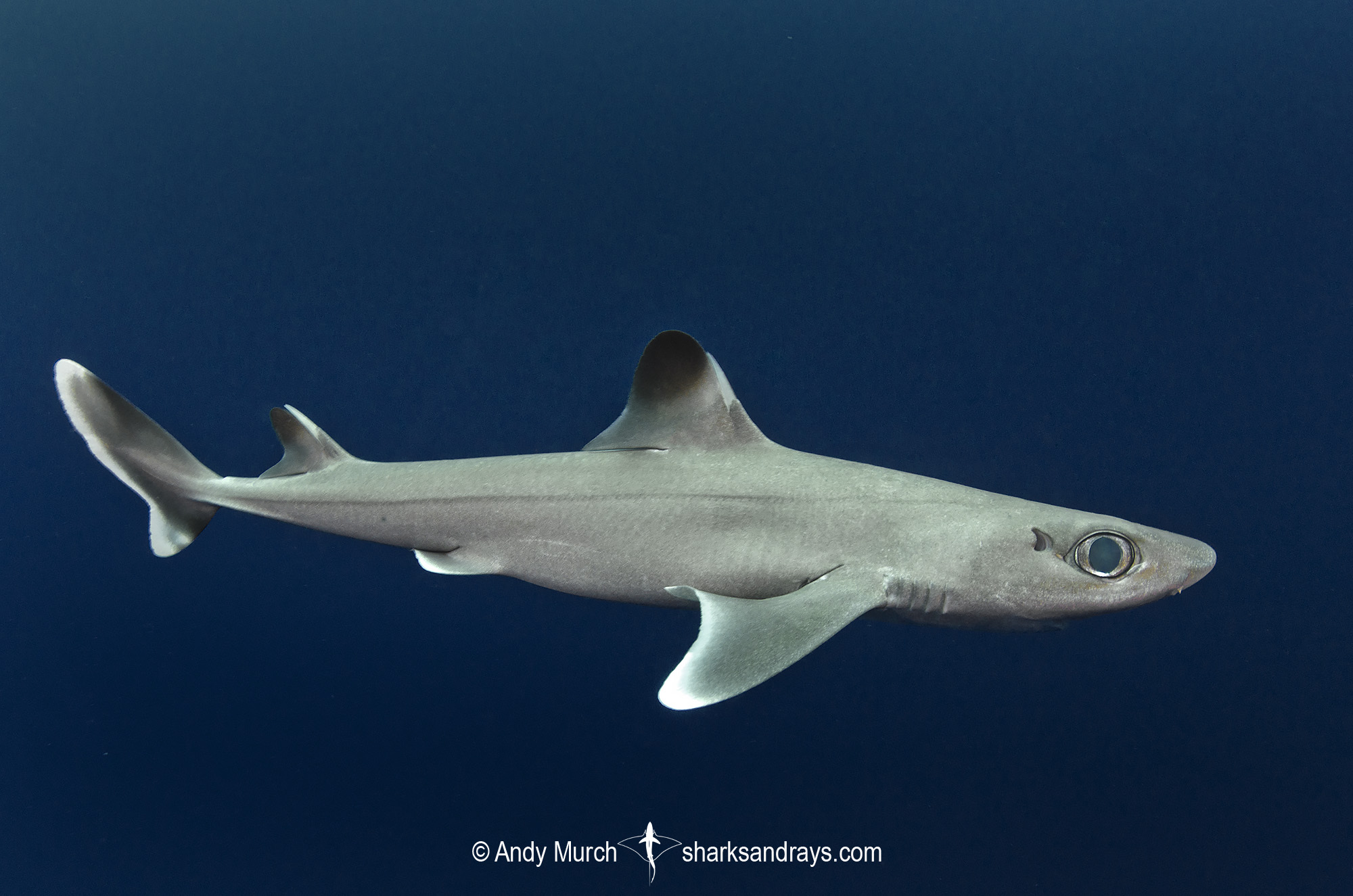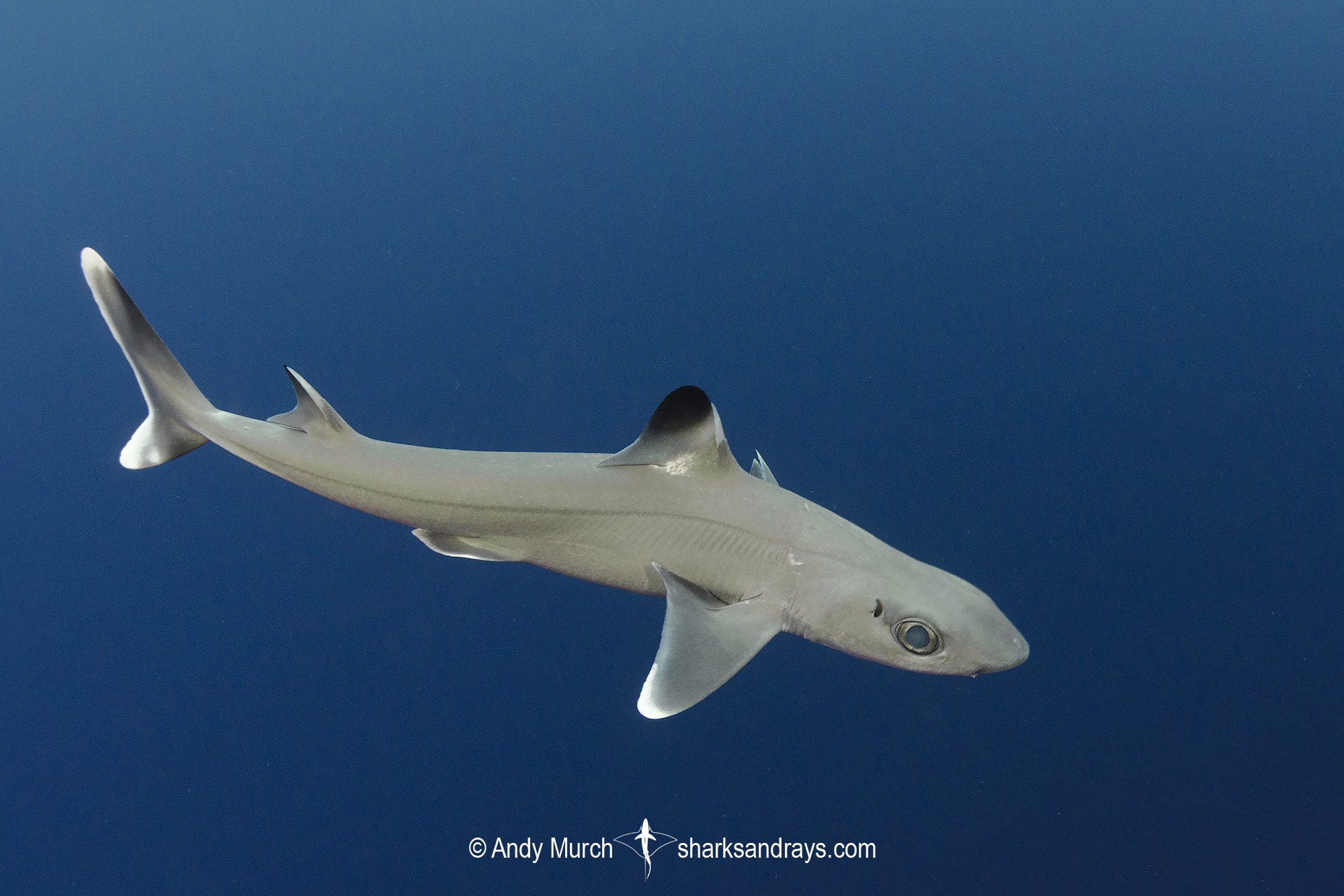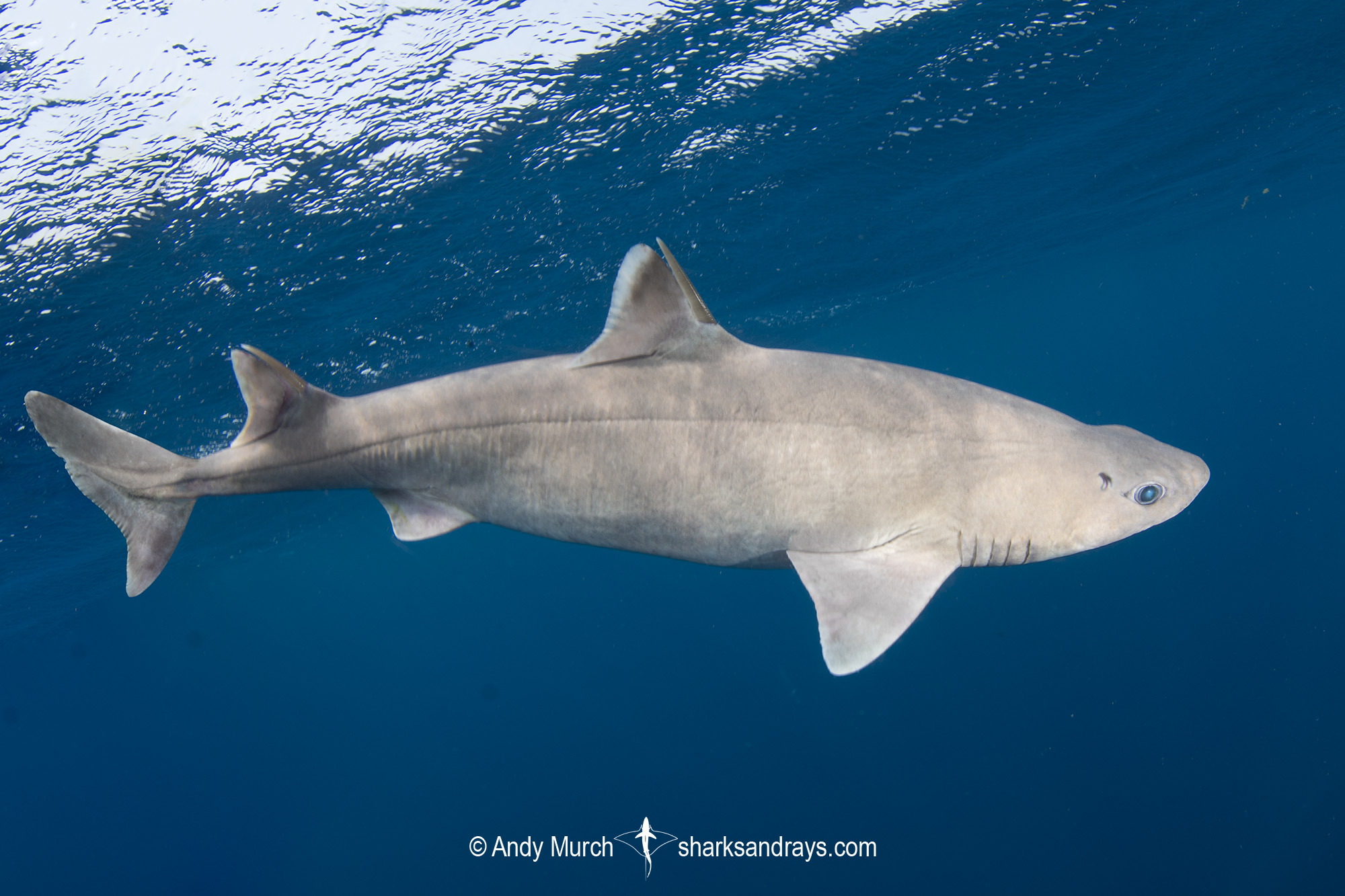Common name(s)
Cuban Dogfish.
Identification
A small squaloid shark with a snout length slightly longer than mouth width, and a short, narrow anterior nasal flap. Two dorsal fins with long anterior spines. First dorsal fin origin slightly posterior to pectoral fin insertion. Second dorsal about half the height of first dorsal. Pectoral fins have pointed free rear tips.
Dorsal coloration grey or olive-grey. Ventrum pale. Dorsal fins have black tips. Caudal fin has black or dusky areas and a bright white posterior margin. Pectoral and pelvic fins have white or pale posterior margins. Body unmarked.
Size
Maximum length at least 65cm (J. Castro). Size at birth 25-27cm.
Habitat
A tropical-temperate deepwater species from the continental shelf and upper slope. Found at depths between 50-904m.
Distribution
The Cuban dogfish is found in the western Atlantic from North Carolina to Florida (including the Gulf of Mexico), throughout the Caribbean Sea, and southwards to Argentina.
Conservation Status
LEAST CONCERN
There is little information available on catch or bycatch of Cuban dogfish, mainly because there are few deep-water fisheries in the Gulf of Mexico and Caribbean Sea. Approximately 490 sharks were reported as bycatch from 2006–2012 in the reef-fish demersal longline fishery observer data and 91% of those are released alive (Gulak and Carlson 2013). This species may also be caught in directed tilefish fisheries that operate as deep as 300 m and it is reported among the bycatch of as the royal red shrimp trawl fishery in the US Gulf of Mexico that operates at depths of 250–550 m (Stiles et al. 2007, Driggers et al. 2015, E. Scott-Denton pers. comm. 12/05/2020). Demersal trawling occurs on relatively restricted fishing grounds adjacent to home ports (Stiles et al. 2007). Observer coverage in the royal red shrimp fishery has also been low (Scott-Denton et al. 2012) and so bycatch information is scarce and reported as presence/absence. Information is lacking on the post-release survival from commercial gear, however, a study conducted in the Bahamas reported post-release survival from research longlines of around 50% (Talwar et al. 2017).
Citations and References
Cotton, C.F., Derrick, D., Herman, K., Pacoureau, N. & Dulvy, N.K. 2020. Squalus cubensis. The IUCN Red List of Threatened Species 2020: e.T61416A3104105. https://dx.doi.org/10.2305/IUCN.UK.2020-3.RLTS.T61416A3104105.en. Downloaded on 09 January 2021.
Reproduction
An aplacental viviparous species. Lecithotrophic, wherein the embryos consume all of the food within the egg case but do not feed once internal hatching takes place. Litter size 18-23. Birthing probably takes place in February/March.
Diet
The Cuban dogfish feeds on benthic fishes and invertebrates. Tagged specimens were caught on a variety of baits including cobia, bonito and shark.
Behavior
Known to form large, dense schools.
Reaction to divers
Cuban dogfish inhabit water too deep to be encountered by divers. Captured specimens showed no aggressive behaviour.
Diving logistics
With a minimum depth of 50m in the Gulf of Mexico (where it is abundant) there is a chance that deepwater chumming could encourage a Cuban dogfish or two to rise to recreational limits.
There is also a chance that this species may be randomly encountered by technical divers, but I have not heard of any sightings.
Similar species
Spiny Dogfish Distinguished by white spots on lateral line, and lack of black tips on dorsal fins.
Roughskin Spurdog Distinguished by lack of black tips on dorsal fins and position of first dorsal origin, which is significantly posterior to free rear tip of pectoral fins.
The Shark Forum
Let’s talk about sharks








